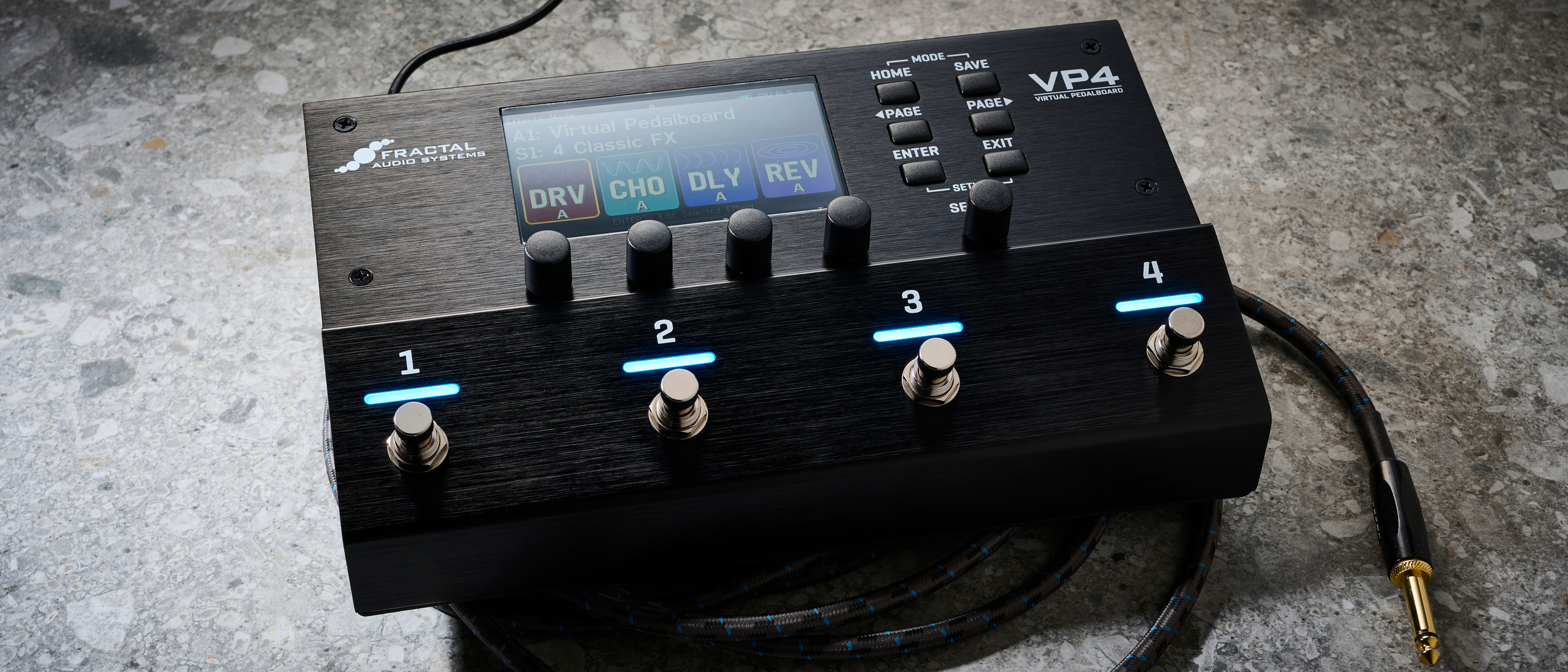MusicRadar Verdict
It's hard to find fault with the VP-4 beyond the small latency issue. Axe-FX's effects are so good that simply putting them in a standalone box is a compelling proposition. And Fractal has delivered here with fantastic usability and sounds.
Pros
- +
Fantastic range of effects.
- +
Accessible user interface.
- +
Connectivity for 2 expression pedals.
Cons
- -
Slight lag on activation.
- -
Four simultaneous effects might be enough for some.
MusicRadar's got your back
What is it?
The VP4 is a new multi-effects pedal from Axe-FX, hitting a more affordable prince point for the brand with a slimmed-down, sans amp modelling, offering.
The VP4 strips out the amp sims and modelling capabilties of their other floorboards, the FM3 and larger FM9, and focusses only on the FX blocks.
It ships as four independent footswitchable blocks that run in series, but can be set up in a rack-like scene format and edited with the accompanying VP4 software.
Specs
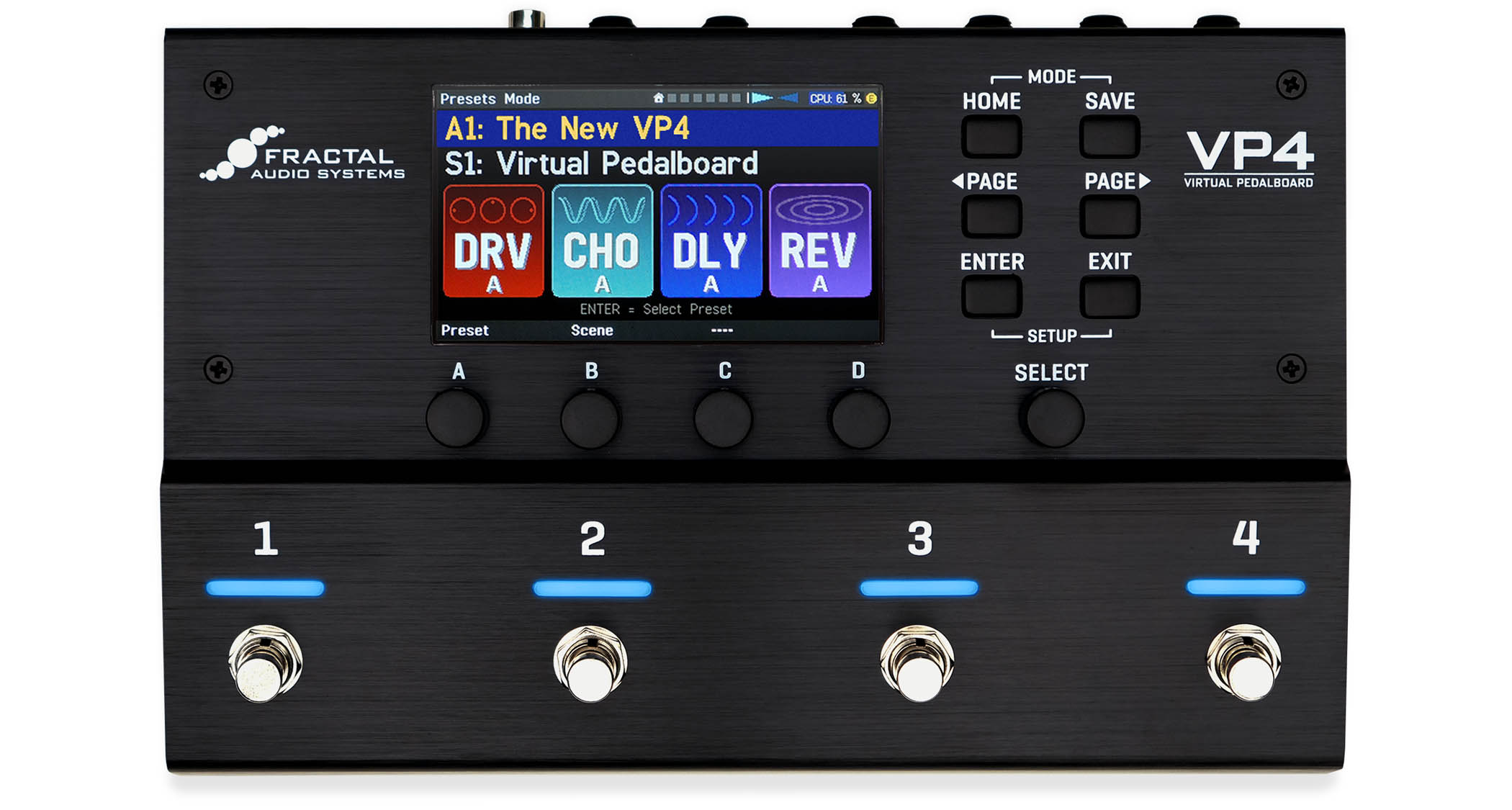
Launch price: $699 / £749 / €899
Type: Multi-effects pedal
Made: China
Controls: 4 footswitches, 4 A-D control pots, main Select pot, Page up/down, Home, Save, Enter, Exit buttons
Features: 69 drive pedals, 78 reverbs, 16 compressors, 128+ delays, gate, EQ and tuner
Connectivity: Stereo input/output, SPDIF in/out, MIDI in/out, 2 expression pedal inputs, USB-C, power input
Weight: 1.56kg / 3.44lbs
Dimensions: 254 x H x 160 mm
Contact: Fractal Audio Systems
Build quality
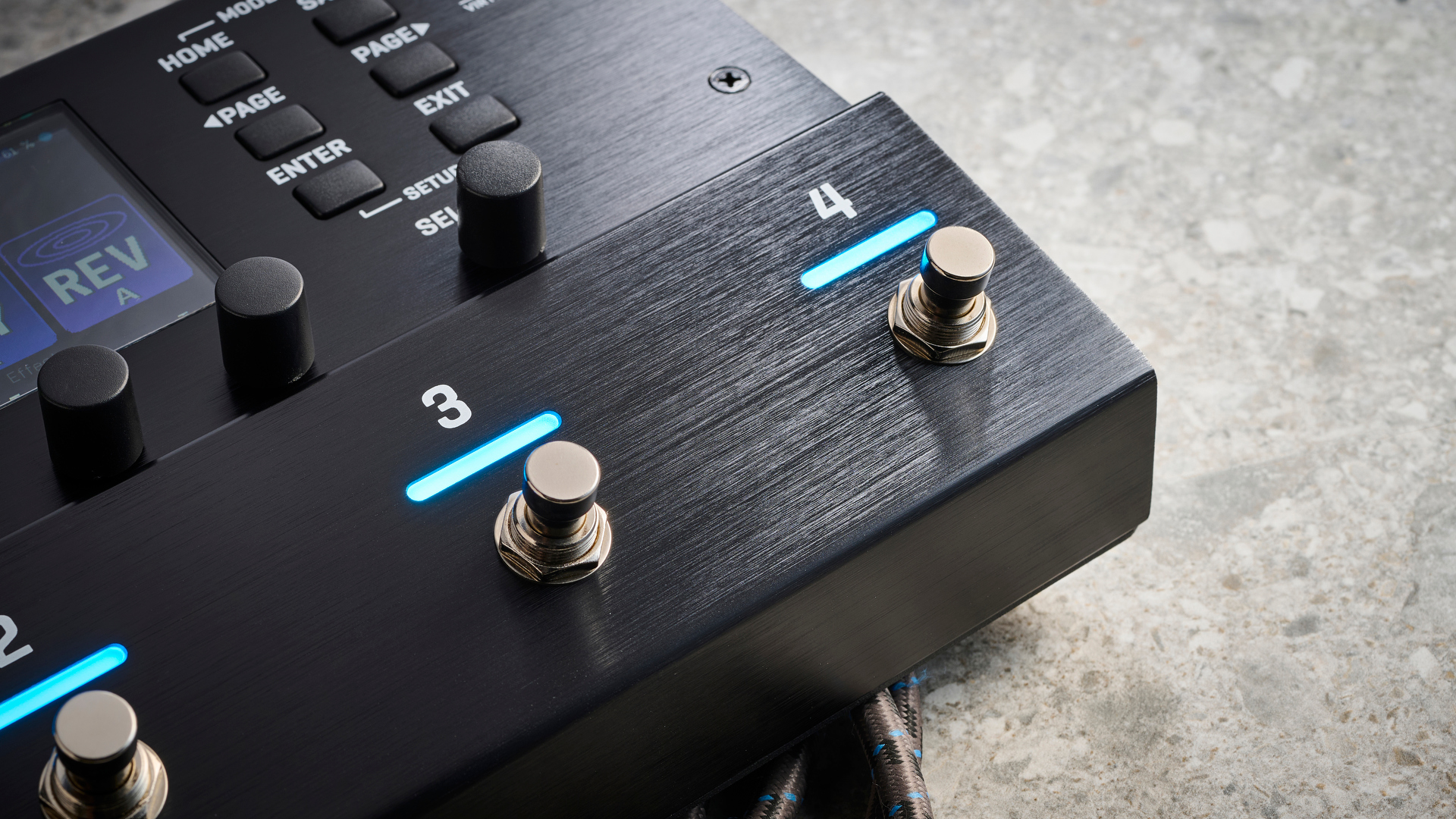
Build quality rating: ★★★★☆
The unit has a similar chassis to the flagship Boss 500 series. As a result, it feels like it would do more damage to the stairs than to itself if it were dropped down a flight.
There's a full-colour screen, and similar control layout to Axe-FX's previous floor effects unit, the FX-8. On each patch, three controls are always accessible, and you page between parameters in groups.
Selecting an effect is easy. They're organised first by type, and then accessible via submenu, and auditioned as you select them via rotary control.
Usability
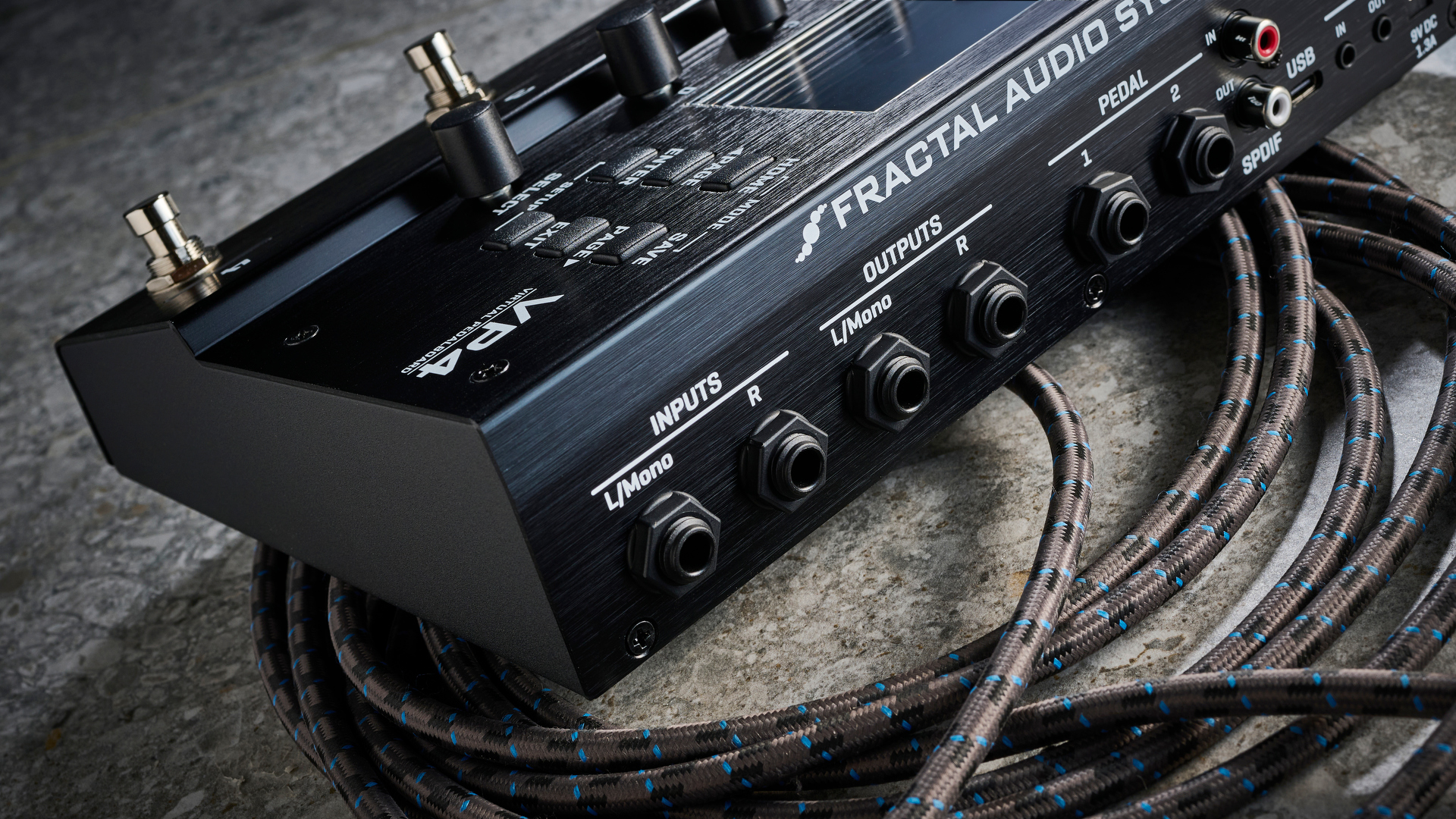
Usability rating: ★★★★☆
Compared to multi-effect pedals with more of their parameters always accessible on the front panel, it suffers somewhat, although it's by no means difficult to work with
The first thing I do is the 'no manual test', which the VP-4 passes with flying colours. I manage to navigate around and get a patch running without any guidance – always a positive. In general, it does a good job of being accessible to normal players rather than power users, and editing workflows are intuitive and quick.
Compared to multi-effect pedals with more of their parameters always accessible on the front panel, it suffers somewhat, although it's by no means difficult to work with. That said, the excellent editing software also makes it easy to build and edit patches on the computer.
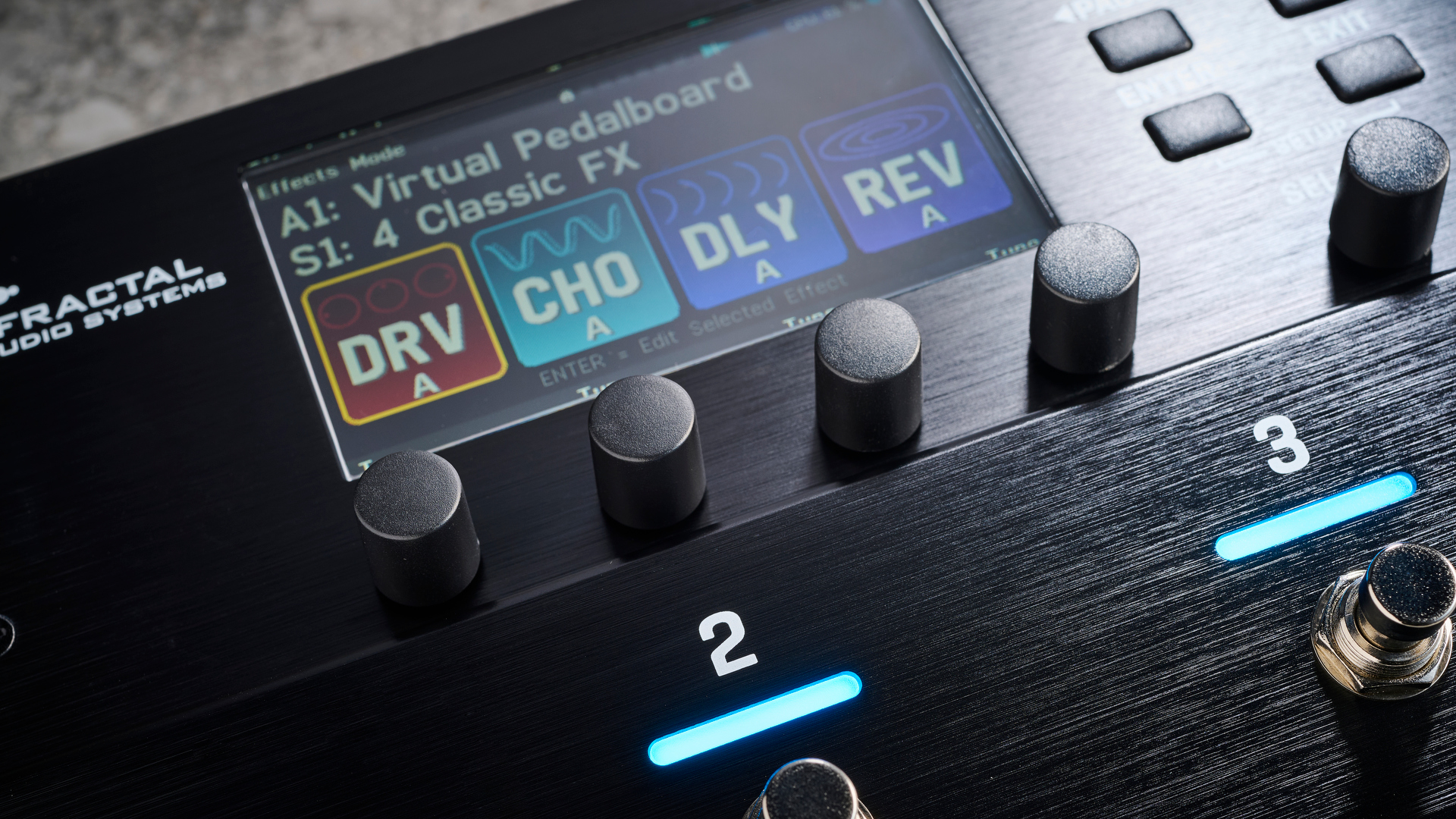
One minor but excellent feature is the micro guitar tuner, which is permanently on at the top of the screen.
If you want to run drives in front of the amp and delays in the effects loop, the VP-4 only supports mono when connecting via the four-cable method (4CM)
It's too small to be of use in a live environment, but at home or in the studio, it saves valuable seconds switching to the tuner mode, allowing you to stay in the flow for longer.
I hit the biggest issue as we start playing to a backing track, switching between loud and quieter sections using a drive block. While playing, there's no perceptible latency, but when pressing the footswitch, there's a lag before the effect engages.
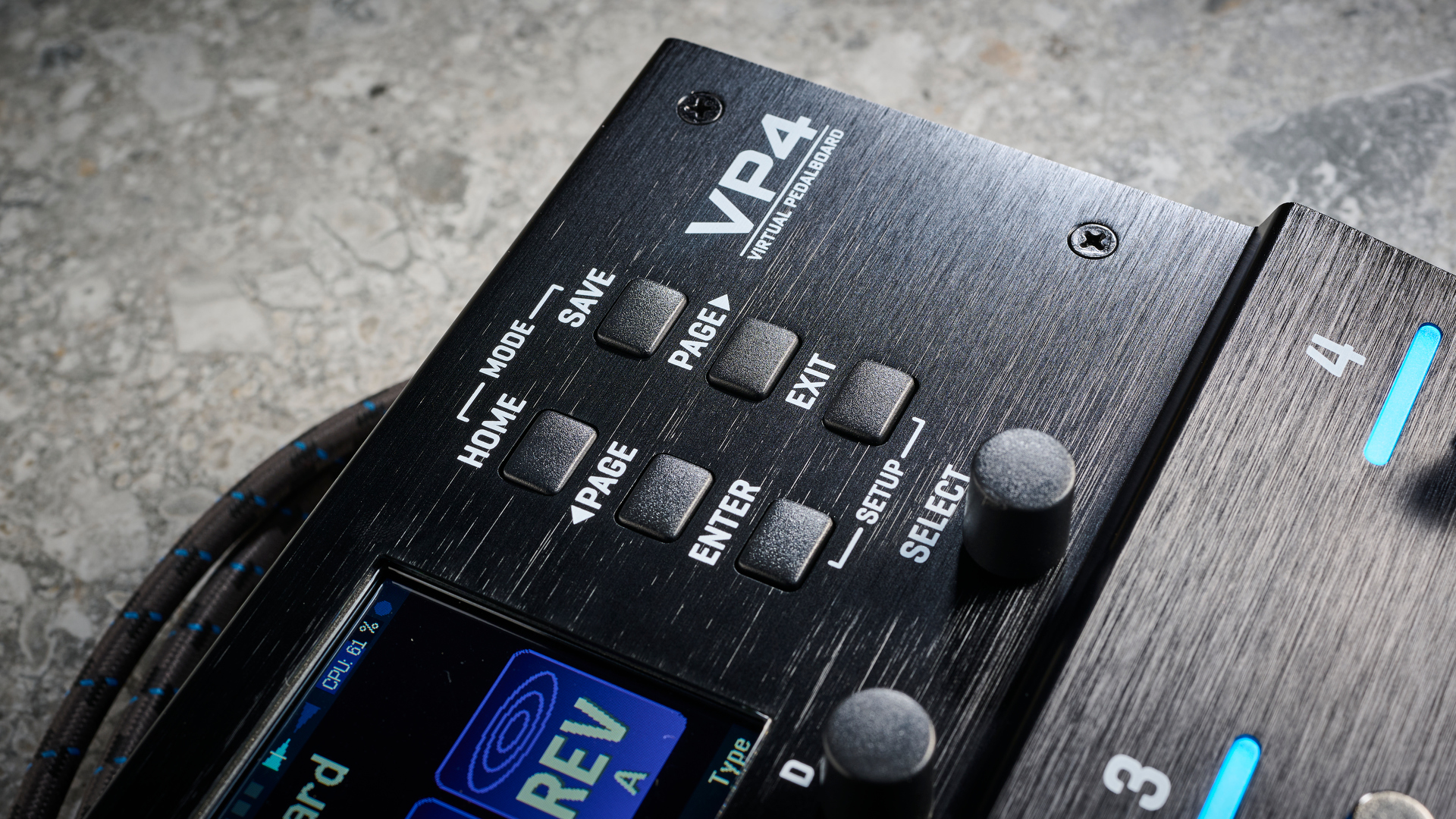
I try several combinations of effects, and CPU utilisation doesn't seem to be the culprit. After a few toggles it becomes easy to factor in, but it is a pretty major issue.
A second, more minor drawback for power users is in the connectivity department. If you want to run drives in front of the amp and delays in the effects loop, the VP-4 only supports mono when connecting via the four-cable method (4CM).
I tend to favour clean pedal-platform guitar amps, and don't mind a bit of hair on our delays, reverbs and modulations, but that might be a deal-breaker for some.
Sounds
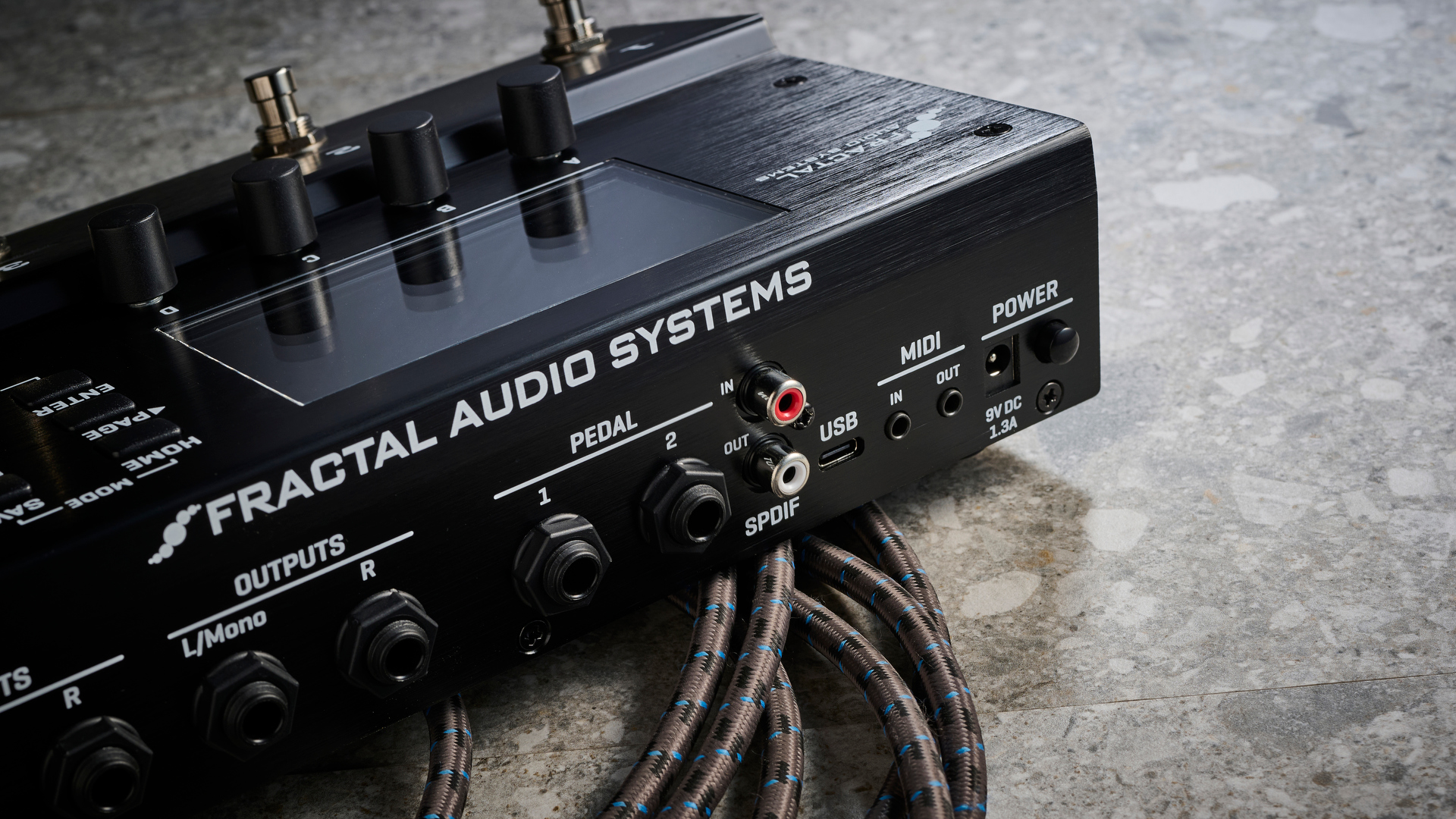
Sounds rating: ★★★★☆
Plugging first into a DAW and pulling up an amp sim, the quality of the delays and reverbs is immediately obvious. Auditioning them against plugins and emulations 'in the box' makes it clear that these are as studio-grade as one might hope.
I add a drive in front, which reveals that stacking drive blocks with and drive pedals works as expected. Even so, we do end up preferring a signal path that sees the VP-4 mainly used for modulation, delay and reverb. By the time we're into flow, I have a chain laid out with our Whammy and trusty Hamstead Odyssey in front.
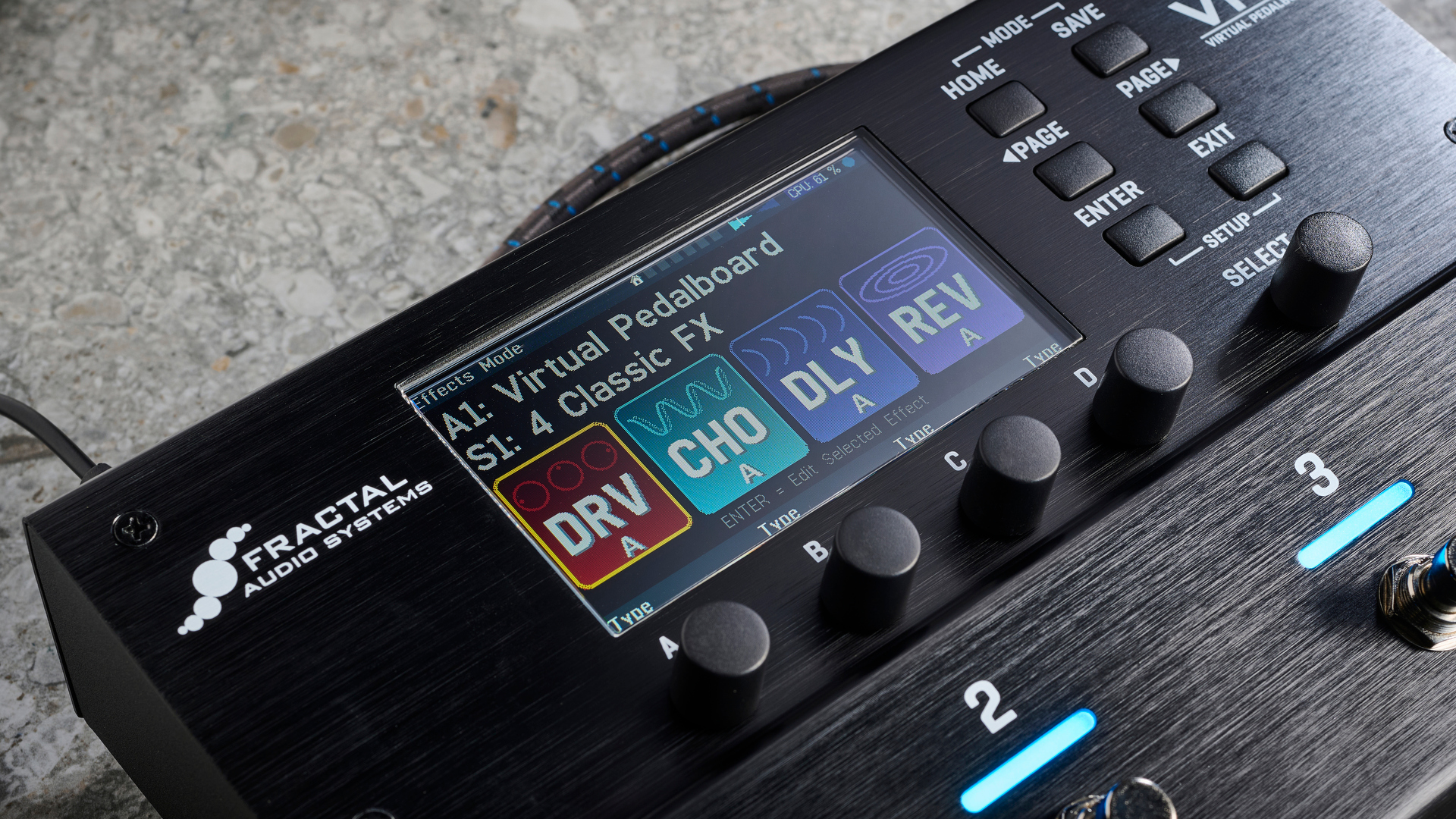
After some rearranging, we plug a Strandberg with a Tele-style bridge pickup in to a slightly dirty half stack, and now the pedal really makes sense.
Sat next to a Pedaltrain Junior worth of pedals, the VP-4 isn't much different in size, convenience or versatility for studio use. However, in front of a half stack, the VP-4 is small enough to go in a gig bag, yet covers most of the bases of the larger 'board for live use.
On the whole, the emulations are pretty spot-on
We switch the drive block to a ProCo RAT emulation and push the level up, which pulls additional saturation from the stack, as well as more bite on the reverb. With the presence up at the amp end, we dive into the menu to tinker with the high cut so the reverb isn't overwhelming at higher frequencies.
Switching to the lipstick-style neck single coil, we audition a few more drives. On the whole, the emulations are pretty spot-on, even including what sounds like the love-it-or-hate-it Marshall Shredmaster.
Needing a little extra magic, we dive deep into the plex delays selection. These cover a range of esoteric effects from granular delays to filter sweeps
Finally, I switch back to the RAT and a Les Paul, bashing out knock-off Perfect Circle riffs using a rich chorus and various delays. Needing a little extra magic, I dive deep into the plex delays selection. These cover a range of esoteric effects from granular delays to filter sweeps.
Though they lack the versatility of standalone pedals, they mean you can emulate experimental units like those from Red Panda or Hologram. I eventually land on a diffused delay with pre-delay and ducking that has us rushing to grab a mic to record the twisted, pad-like results.
Verdict
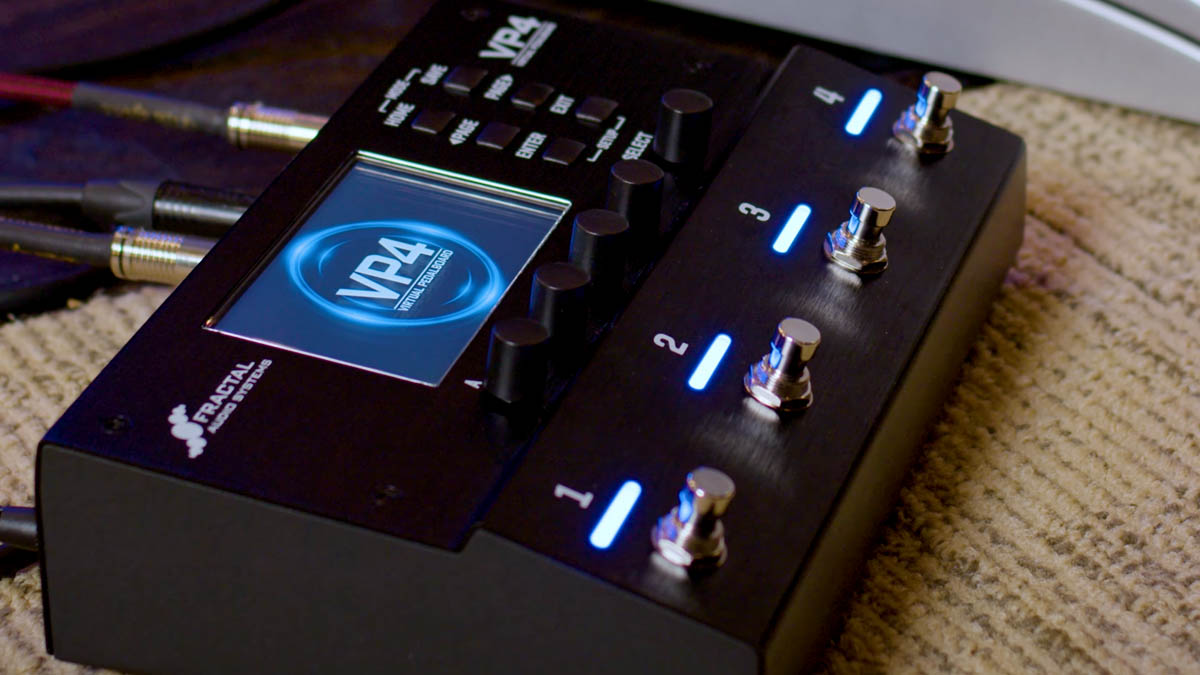
Any pedal that quickly has you writing new riffs and experimenting with song ideas is clearly musically inspiring.
The range of high-quality effects crammed into the VP-4 means that it can be used to experiment, as well as cover specific pedals missing on a board
The range of high-quality effects crammed into the VP-4 means that it can be used to experiment, as well as cover specific pedals missing on a board. We found it worked best when run with a distortion pedal and pitch-shifter in front, but it could viably replace an entire board, drives and all.
It's hard to find fault with the VP-4. The effects from the Axe-FX III are so good that simply putting them in a standalone box is already a knockout product.
The only drawback we can find is the slight latency on block activation, and the fact that many players will likely run more than four effects in total at some point during a set. However, it's compact enough that the VP-4 with two extra pedals may still fit in the average gig bag.
| Test | Results | Score |
|---|---|---|
| Build quality | It's tough, possibly indestructible. | ★★★★★ |
| Usability | Passes the "no manual" test, but some latency issues. | ★★★★☆ |
| Sounds | Fresh from the Axe-Fx, they're awesome. | ★★★★★ |
| Overall | Industry-standard effects, compact package. | ★★★★1/2 |
Also try
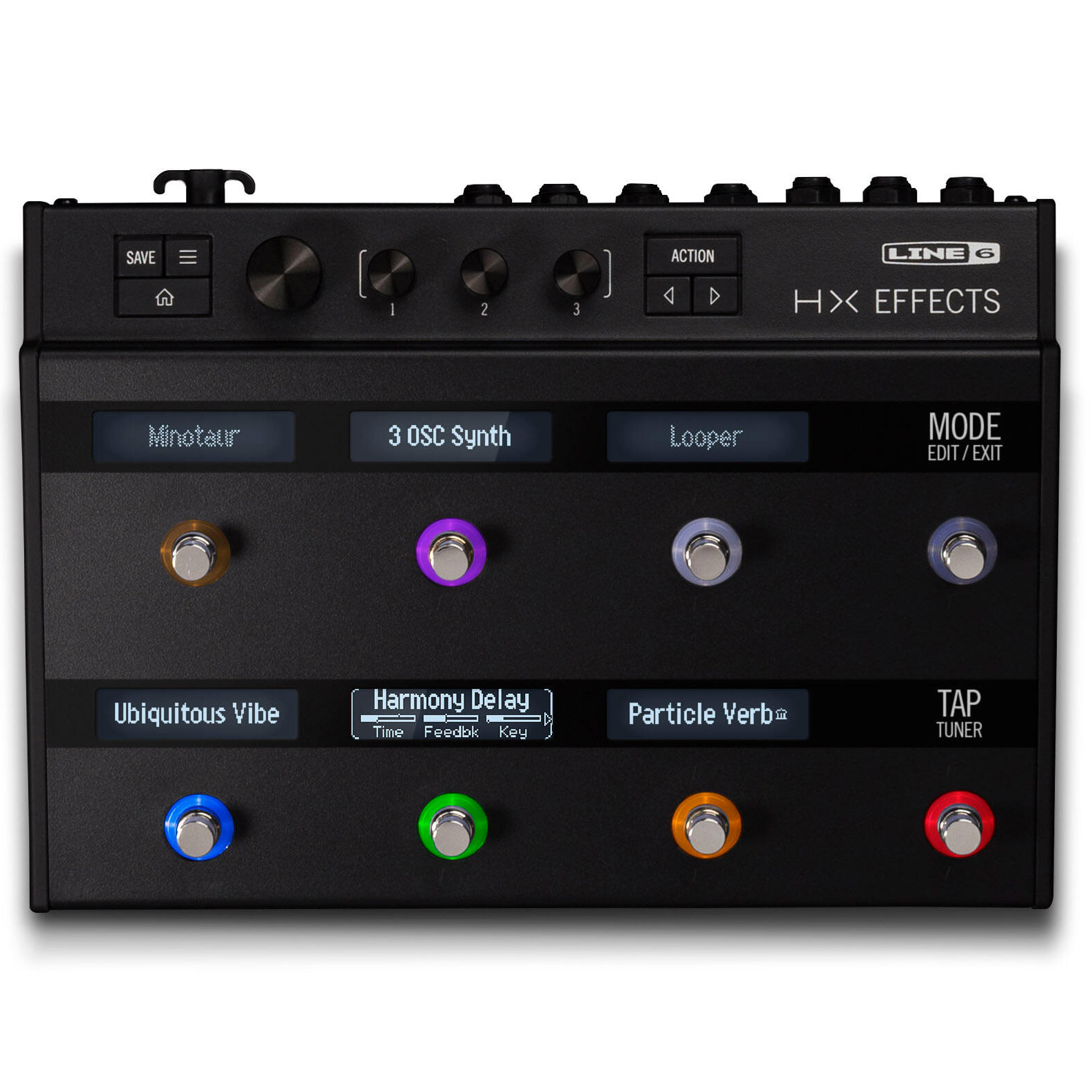
$499/£449
It should be no surprise that Line 6 knocked the effects on the Helix and HX series out of the park. This is its only model that focusses solely on that without amp modelling, and offers the option to run nine simultaneous effects.
Read more: Line 6 HX effects review
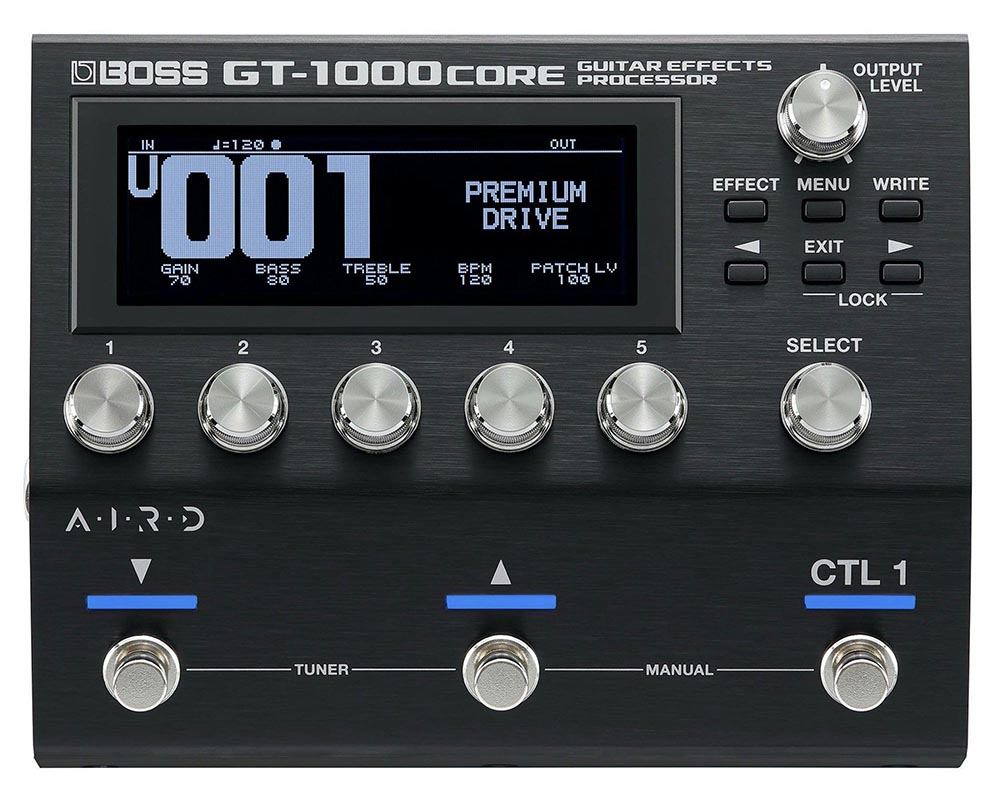
$599/£599
Historically the kings of the stompbox, the BOSS team were held back by relatively unintuitive user interfaces. That started to change with the GT-1000 series, and the effects here are brilliant, borrowing from the larger GT-1000 as well as 500 series boxes.
Read more: Line 6 HX effects review
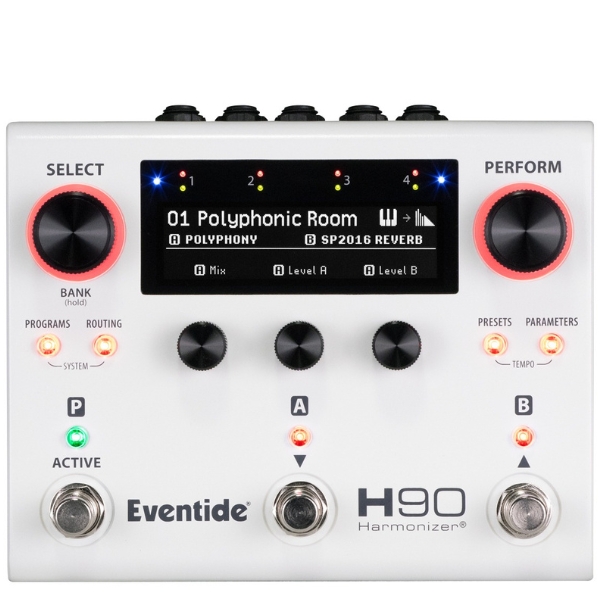
$899/£717
If you really want to explore the esoteric outer limits with effects, Eventide has the algorithms to fuel your adventures here. A step up from the H9 that offers two effects simultaneously, but probably too deep for more traditional tastes and needs.
Read more: Eventide H9 Harmonizer review
Hands-on videos
Cooper Carter
Andy Wood
John Nathan Cordy
Leon Todd
Alex Lynham is a gear obsessive who's been collecting and building modern and vintage equipment since he got his first Saturday job. Besides reviewing countless pedals for Total Guitar, he's written guides on how to build your first pedal, how to build a tube amp from a kit, and briefly went viral when he released a glitch delay pedal, the Atom Smasher.
“I used everything I knew about music”: How Green Day exceeded expectations with their most ambitious song
YouTube just added AI tools that makes musicians, library music and video editors redundant
“Every one of them said yes without hesitation": Hank Marvin and Roger Taylor have just remade a '60s classic for charity
